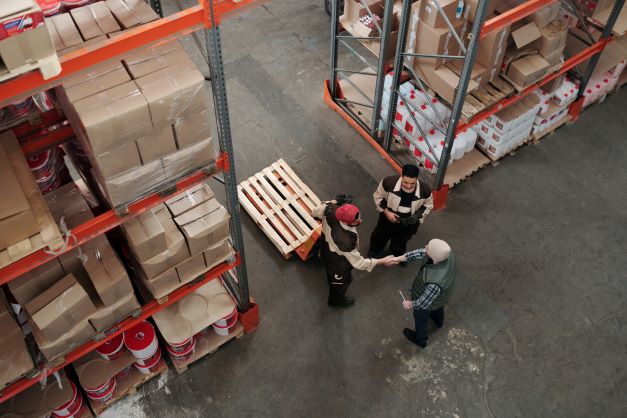
To choose the best packaging materials for your needs, it’s important to understand the different types of materials available and which will suit best a particular product. Here we will discuss the most common packaging materials used in business and personal settings. This is whether it is cardboard, a selection of pallet wrap, or a glass bottle.
Cardboard
Cardboard is a popular packaging material for a variety of items, from food products to electronics. It’s durable and lightweight, making it easy to transport and store. Cardboard packaging can also be easily recycled.
When thinking of the environment, we tend to think about recycling cardboard before many other materials. Everyone has become used to either recycling it or using it again for packaging. It is a rigid material that is capable of protecting goods sent through the post.
Pallet Wrap
Pallet wrap is a special kind of material used commercially with pallets and to great effect when protecting the goods that they hold. Products can then be securely transported across foreign waters to different countries and continents. The items must be secure for shipping or air transportation.
Plastic
Plastic is another common packaging material, used for everything from packaging food to packaging delicate items. It is often clear so that customers can see the product inside. It’s also lightweight and easy to store.
An advantage of plastic is that it prevents the materials inside the box from becoming contaminated. It is waterproof as opposed to cardboard, which although resistant with a glossy service, is not fully waterproof in the event of a heavy downpour or submersion.
Paper
Paper packaging is often used for packaging food, as it’s easy to print on and seal. It can be recycled, making it a good choice for businesses that are conscious of their environmental impact.
It is a good filler to have a mass of paper that is cheap yet prevents objects from moving about inside a box.
Aluminium
Aluminium is used for packaging food and beverage products. It is lightweight and easily recyclable and a great product for keeping foodstuffs fresher for longer.
Aluminium foil comes in thin sheets and is used in the kitchen as well as within containers for food packaging.
Glass
Glass packaging is frequently used for packaging food and beverage products. This kind of packaging is sturdy and can be reused. It is breakable but has the advantage of being see-through to see the product inside and also does not allow other substances to mix with what is inside.
You also have the option of coloured or darker glass to obscure views, protect red wine from spoiling in sunlight or turn the product into something even more desirable to buy. We all like to look at the coloured glass on display and then will be more likely to re-use its packaging later. This is particularly environmentally friendly as an option.
The choice of packaging materials does make the decision harder in terms of selection but only in a good way. We can always then find something that perfectly suits the product to be contained within or that is being protected in terms of its outside. The best kind of protection is when different people can handle an item inside its packaging who are not perhaps that careful yet the product still survives. All we can do, though, is to package to the best of our knowledge and ability to give that product every chance of not being damaged. Insurance companies and those waiting for the products at the other end will be grateful for that. We can hardly fulfil a contract fully and on time if our product is becoming damaged and only some of the items are useable once received.
These are some of the most common packaging materials used in business and personal settings. When choosing packaging materials, it’s important to consider the needs of your particular product. Cardboard, plastic, paper, aluminum, and glass are all good choices for packaging materials, depending on the item being packaged.